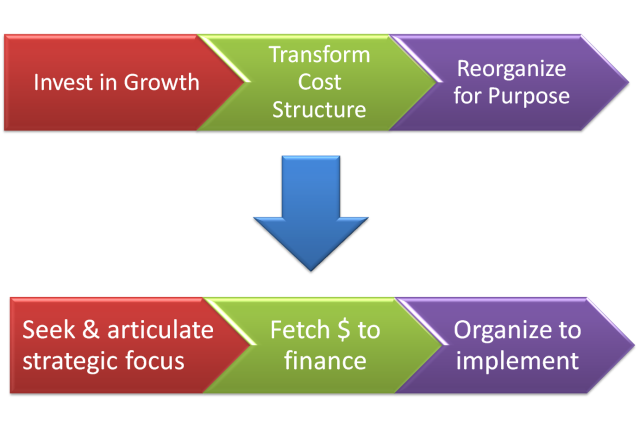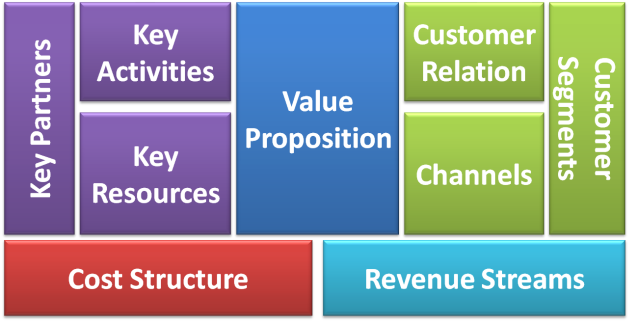This post is based on my reading of “A Fit for GrowthSM Framework for Telecom Operators: Aligning Capabilities, Costs, and Structure” by Martin Reitenspiess, Christine Rupp, Hannes Gmelin, and Chady Smayra, via Booz & Co.
It is an attempt to reconstruct the proposal made in the publication by drawing analogies to other pieces of work. This publication (from April 2013) from Booz & Co proposes a “Fit for Growth” framework to transition from price-based competition strategy to differentiation strategy. Not surprisingly the industry in question, Telecom, is industry characterized by the following observations:
- Stagnating market due to saturation of primary revenue sources
- Declining margins accompanied by price competition
- Substitute OTT (over-the-top) technologies hurting the basic product offerings
- Shift in consumer behavior demanding higher capital investments in technology upgrades
The figure below depicts the three tier approach proposed by the framework (the process above) and my simplistic interpretation of each step (the process below)

I couldn’t help but relate this approach to Business model innovation and its representation using the Business Model Canvas. One possible business model representation as described in Business Model Generation is the decoupling of Operations, Customer Relationship Management & Product Innovation.

An organization keen on business model innovation could use the Fit for Growth Framework and communicate the same using the business model canvas representation.
Once the leadership team decides to assess the ground realities of its business and charts out the current business model, it needs to take a call on which of the three aspects it will focus on. It naturally follows that leveraging current competencies is essential & management commitment to additional investments nurturing the key capabilities is imperative.
While additional funding may be secured from external sources, internal cost cutting is a long preferred approach. However this time, as the article suggests there are two ways of doing this. Firstly make ‘cost effective operations’ a way of life, not a one-time business exercise and more importantly identify rightly the good costs vs. bad costs. Secondly, the desired strategic focus area in tandem with the assessment of the current business model will bring out non-core area expenditures – seeking ways to cut costs dramatically in these avenues will go a long way in making a lean cost structure. My analogy between the proposed framework and business model innovation is depicted below:

The article has extremely interesting insights for this approach to seeking growth. However, I am in a fix about one specific observation. Exhibit 2 in the original article quotes “Experience Players” to be least profitable.
I would rather argue that experience players focus on the “customer experience” & hence should succeed in driving demand and raising the ‘willingness to pay’ among customers, while lowering non-core costs. Having said that, wouldn’t such a player also have a larger share of the industry profit pool?
Your thoughts?